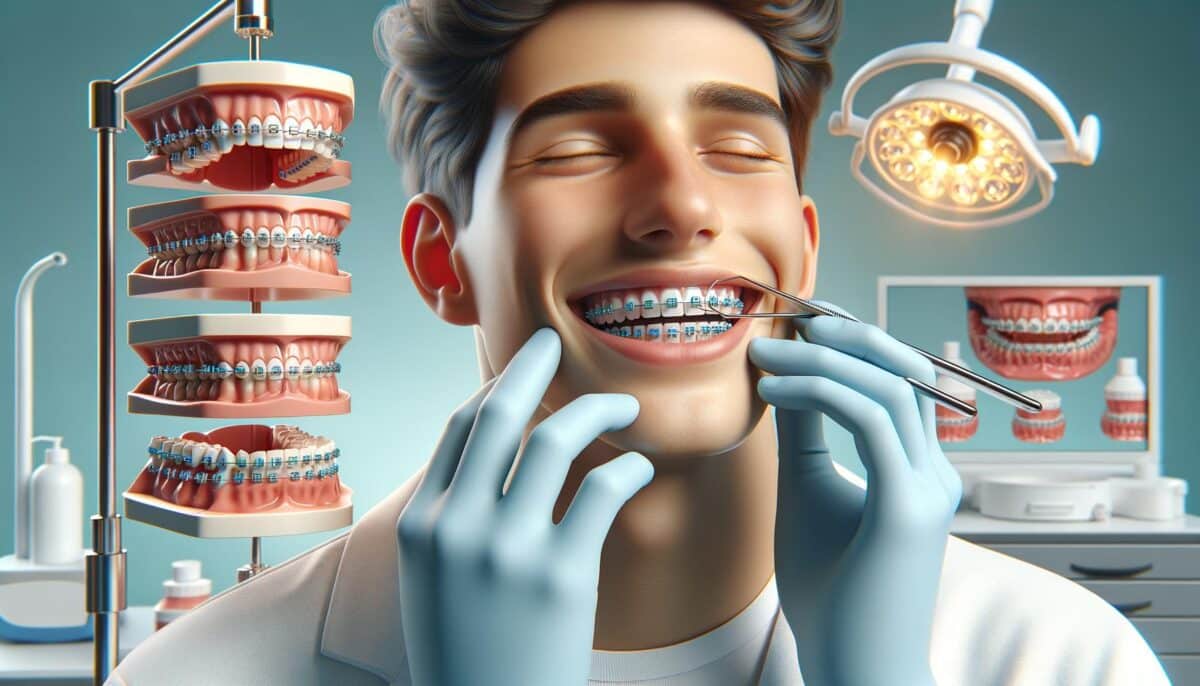Understanding Dental Braces
Dental braces are orthodontic devices used to correct misaligned teeth and jaws. They work by applying consistent pressure over time, gradually repositioning teeth into the desired alignment. Whether for aesthetic purposes or to improve oral function, braces are a common solution for various dental issues. The primary types of braces include metal braces, ceramic braces, lingual braces, and clear aligners. Metal braces are the most traditional form, made from stainless steel and often accompanied by colored bands for a personalized touch. Ceramic braces function similarly to metal ones but blend in with the teeth, making them less noticeable. Lingual braces are attached to the back of the teeth, offering an invisible solution. Finally, clear aligners provide a removable and discreet alternative, popular for adults and teenagers alike.
The Benefits of Braces
The advantages of wearing braces extend far beyond aesthetics. Straightening teeth can significantly improve oral health and overall well-being. Here are some of the key benefits:
- Improved Oral Hygiene: Correctly aligned teeth are easier to clean, reducing the risk of plaque build-up and cavities.
- Reduced Risk of Gum Disease: By eliminating gaps and overcrowding, braces support healthy gums, minimizing the risk of periodontal disease.
- Enhanced Bite and Speech: Properly aligned teeth ensure efficient chewing and contribute to clearer speech patterns.
- Prevention of Bone Erosion: Misaligned teeth can lead to jawbone erosion, which braces can help prevent.
- Boosted Self-Esteem: A straight, beautiful smile often leads to increased confidence and improved social interactions.
Recognizing these benefits highlights the importance of considering braces not just for cosmetic reasons but also for health.
The Braces Journey: What to Expect
Embarking on the journey with braces involves several stages, each crucial to achieving the optimal outcome. Understanding these steps can help set realistic expectations for those considering braces. First, a comprehensive orthodontic evaluation will determine the specific needs and appropriate type of braces. This is followed by the fitting process, where brackets are bonded to the teeth and connected with wires or bands. Once the braces are in place, regular orthodontic visits are essential to adjust the tension of the wires, ensuring continuous progress. Patients usually wear braces for a period ranging from one to three years, depending on their individual treatment plan. It’s not uncommon to experience slight discomfort or soreness after adjustments, but this is a sign that the braces are effectively working.
Taking Care of Braces
Maintaining good oral hygiene is even more important for people with braces. Here are some tips to ensure your braces function effectively and your teeth stay healthy:
- Brush thoroughly after every meal to remove food particles stuck in the brackets and wires.
- Use a fluoride toothpaste and a soft-bristled toothbrush or an electric toothbrush with a special orthodontic head for better cleaning.
- Floss daily with floss designed for braces or use a water flosser for hard-to-reach areas.
- Avoid sticky and hard foods that can damage brackets and wires, such as popcorn, caramel, nuts, and chewing gum.
- Regular dental check-ups and cleanings are crucial to monitor oral health and maintain braces.
By adhering to these care tips, patients can contribute to successful orthodontic treatment and minimize potential complications.
Life After Braces
Once the braces are removed, the journey is not over. Retainers play a critical role in maintaining the alignment achieved during treatment. Orthodontists often recommend wearing retainers full-time initially, gradually transitioning to nighttime use. Retainers help keep teeth stable as they settle into their new positions, preventing them from shifting back. It’s also essential to continue regular dental check-ups and maintain rigorous oral hygiene practices to preserve the health and appearance of the newly aligned teeth. For many, life after braces brings a newfound confidence and ease, making all the effort worthwhile. Patients enjoy easier oral care routines, improved function, and the long-desired straight smile.
Conclusion: Embracing the Braces Journey
Navigating the world of dental braces may appear daunting at first, but understanding the process, benefits, and necessary care can ease concerns and bolster motivation. With various options available, individuals can choose a method that best suits their lifestyle and needs. As a gateway to improved oral health and self-esteem, braces offer long-term rewards, making them a worthwhile consideration for those aiming to perfect their smile. Consulting with an orthodontist can provide personalized advice and a treatment plan catered to individual requirements. Ultimately, embracing the braces journey is a step toward a brighter, healthier future.
